Made with just a handful of ingredients, fresh basil pesto from scratch is so easy to make and so much better than store-bought. It’s so wonderful stirred through a simple pasta dish or even just drizzled over the top of meats. I even use it as a pizza sauce.
Also known as Genovese pesto, pesto alla Genovese or green pesto, it’s main ingredient is fresh basil. Combined with just 4 more simple ingredients, you can make this flavour packed sauce in your food processor.
This is the same pesto I use on my pesto garlic bread.
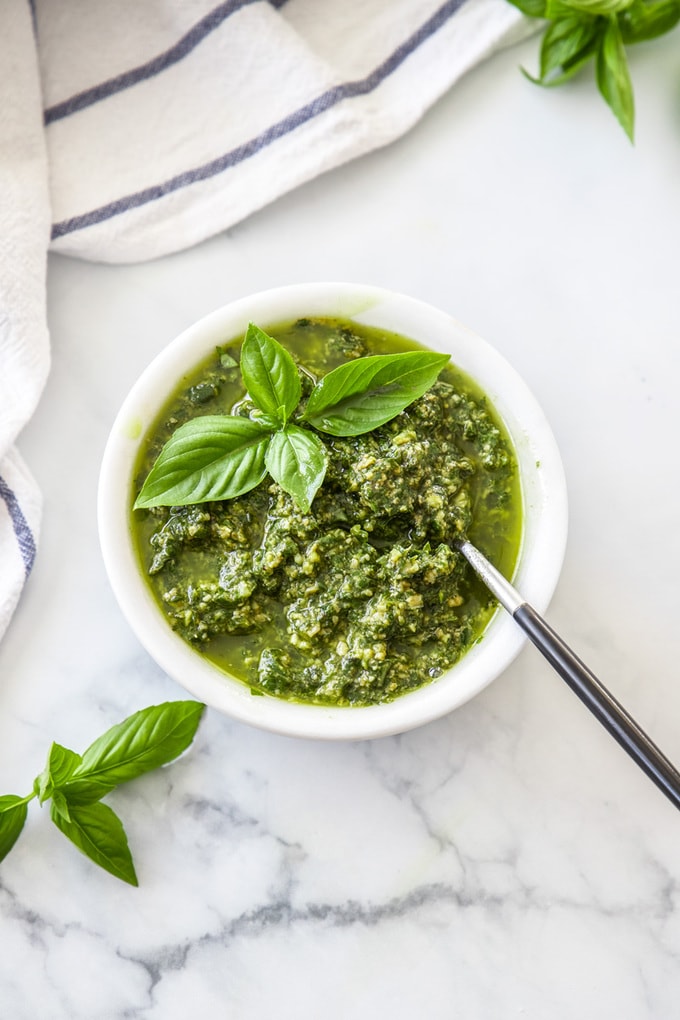
It was a trip to Genoa with my hubby (actually our honeymoon),that made me want to learn how to make pesto from scratch. The very same trip that led to me learning to make Focaccia Di Recco.
The colour of homemade pesto is so vibrant and quite frankly, stunning and the flavour is second to none. Even the ingredients sitting in the food processor bowl ready to be blitzed just look so beautiful. Once you’ve made it yourself, you’ll want to use this lush, green sauce on everything.
And I do. I use it in my Salmon Pesto Pasta, Pesto Chicken Calzone, Chicken Basil Pesto Pasta and as a base on my Easy Flatbread with Turkey and Basil Pesto.
What is basil pesto
Traditional pesto is a green sauce that originated in Genoa, Italy, made from fresh basil, olive oil, pine nuts, garlic and parmesan. It’s more correctly named Genovese Pesto or Pesto Alla Genovese.
Since the word pesto refers to the method in which it is made (‘pestare’ = to pound), it is used more generically these days, for many herby, pounded sauces including this Easy Sundried Tomato Pesto.
Ingredients in pesto
Green pesto ingredients are few and simple. Just 5 in total and about 5 minutes until you have a lovely fresh batch.
- Fresh basil
- Garlic
- Parmesan
- Pine nuts
- Extra virgin olive oil
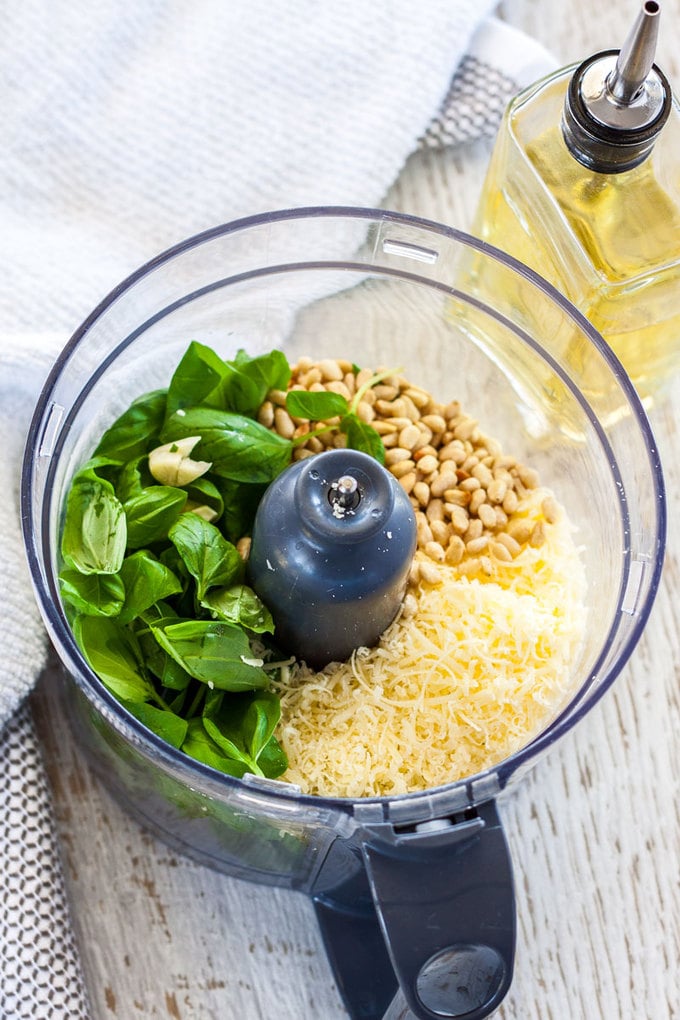
How to make basil pesto
- Start by toasting pine nuts in a 180C / 350F oven for 5 minutes – and I suggest not skipping this as it adds an extra boost of flavour to the finished pesto.
- Now place the pine nuts, parmesan, garlic and fresh basil in a food processor and start to process.
- Slowly drizzle the olive oil into the food processor while it’s running to emulsify everything together.
How to use pesto
There are so many brilliant ways to use pesto and since making fresh pesto is so easy, the ideas are only limited to your imagination
- Stir it through hot pasta for a simple dinner
- Fill chicken breasts with pesto and cheese and bake
- Spread on slices of bread and bake (like garlic bread)
- Spread as a base on bruschetta
- Use it as a pizza sauce
- Add it to soups
- Mix through steamed potatoes for a pesto potato salad
- As an accompaniment to grilled meats
- Spread over fish, then coat in bread crumbs before baking
- Make a pesto lasagna
- Use it in a pesto butter, then freeze for later use on cooked steaks, seafood or chicken or stirred through pasta.
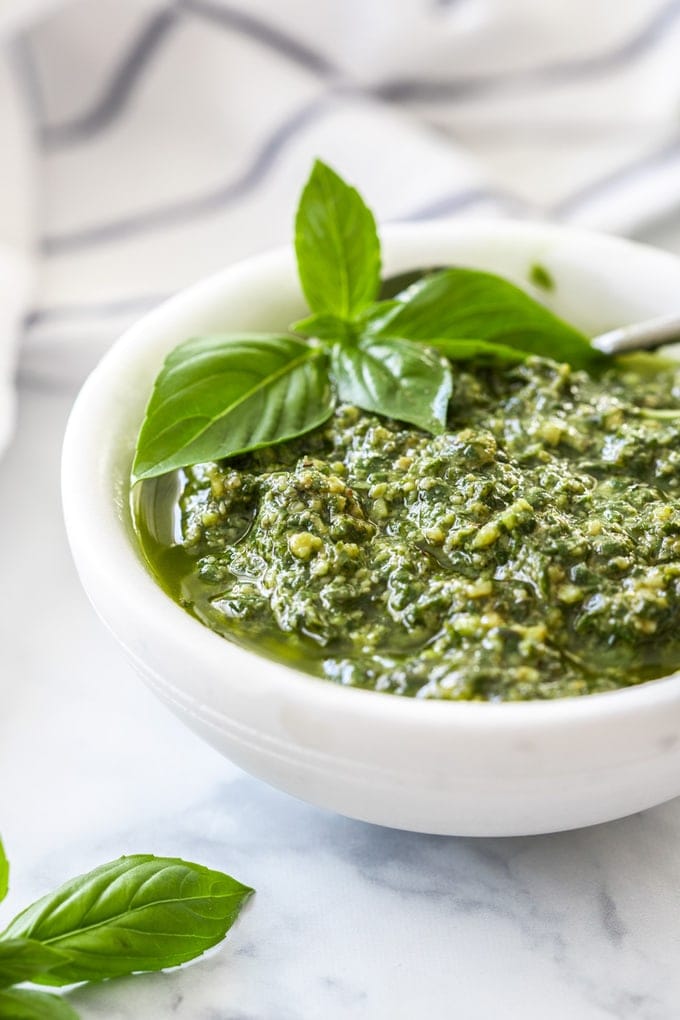
How to freeze pesto
Pesto can be frozen and a great way to do that is on a sheet pan, lined with baking paper. Once frozen, break it into pieces and store it in an airtight container with baking paper between layers so that you can easily take out just as much as you need at any time.
How long does pesto last?
Fresh pesto is best used within 4-5 days. Store it in airtight preserving jars (I like these Weck preserving jars) in the fridge.
Make sure to pour a layer of oil on top of the pesto or it will turn black on top. This is just the oxygen hitting the basil though, so if it does look black on top, you can scrape it away and it will be fine underneath.
Substitutions
- I make my basil pesto with pine nuts but you can make basil pesto with walnuts, almonds, cashews … the list goes on, so use your favourite. I find almonds or cashews a good substitute since they are creamier and less bitter.
- You can also make basil pesto without nuts and use seeds or seed butter instead – think sunflower or pumpkin seeds
- Try making a tomato pesto like my Easy Sundried Tomato Pesto or this unique Celery Leaf Pesto.
- Swap the basil out for spinach.
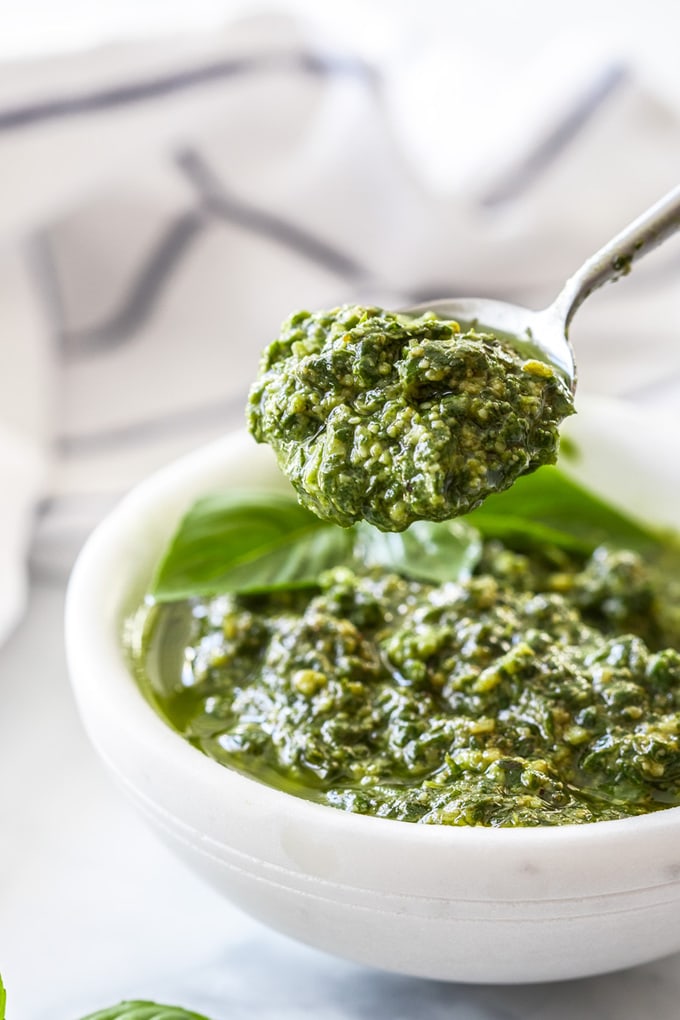
Pesto recipe ideas
- Salmon Pesto Pasta
- Pesto Chicken Calzone
- Easy Flatbread with Turkey and Basil Pesto
- Celery Pesto Rigatoni
- Pesto caprese pasta salad
- Basil pesto butter
Never Miss a Recipe!
Get the latest recipes straight to your inbox!
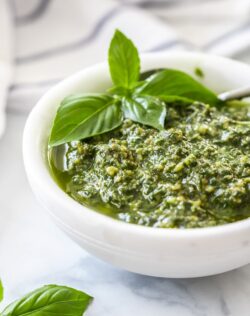
Video
Ingredients
- 2 cups, lightly packed fresh basil leaves (42g / 1.5oz)
- 2 cloves garlic, peeled
- ½ cup finely grated parmesan (35g / 1.2oz)
- 2 tablespoons pine nuts
- ⅓ cup light extra virgin olive oil
For best results, always weigh ingredients where a weight is provided
Instructions
- Preheat oven to 180C / 350F / 160C fan forced. Place pine nuts on a baking tray and toast for 5 minutes shaking every so often.
- Add basil, garlic, Parmesan and toasted pine nuts to the bowl of a food processor and blend on low while adding the oil in a slow steady stream.
- If not using it straight away, sStore in the fridge in a preserve jar with a layer of oil on top for up to 4-5 days.
Notes
- Makes around 1 cup of pesto.
- I use a standard Australian 20ml tablespoon (4 teaspoons worldwide)
- If the pesto turns black on top, this is just air hitting the basil and causing oxidation. Scrape that part away and the rest is fine to use with 4-5 days of making, as long as the pesto is store in an airtight jar.
- Pesto can be frozen. Tip it onto a baking tray lined with baking paper and freeze. Once hard, break it into smaller pieces and store in an airtight container in the freezer with baking paper between the layers.



This post may contain affiliate links that earn me a small commission for my referral, at no extra cost to you. Thank you for supporting Sugar Salt Magic.

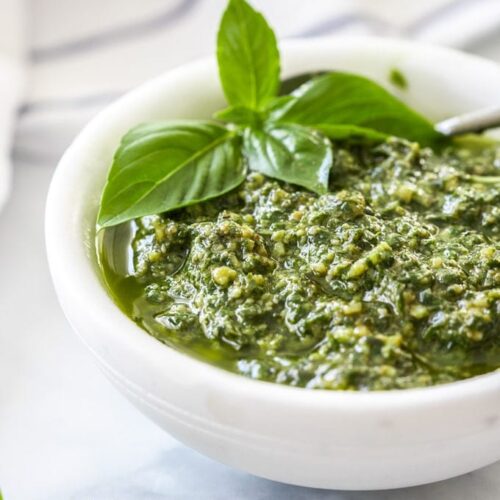
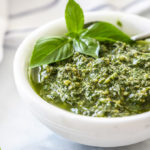

4 Comments on “Homemade Basil Pesto (Genovese Pesto)”
I’d bathe in this basil. Okay, that might be a bit dramatic. Buuuut really, this looks incredible. Definitely need to try!
hahaha. love it. This is so yummy, Karly. I hope you give it a try.
How much does this recipe make? About a cup of pesto?
Hi Jodie. Yes, roughly 1 cup.